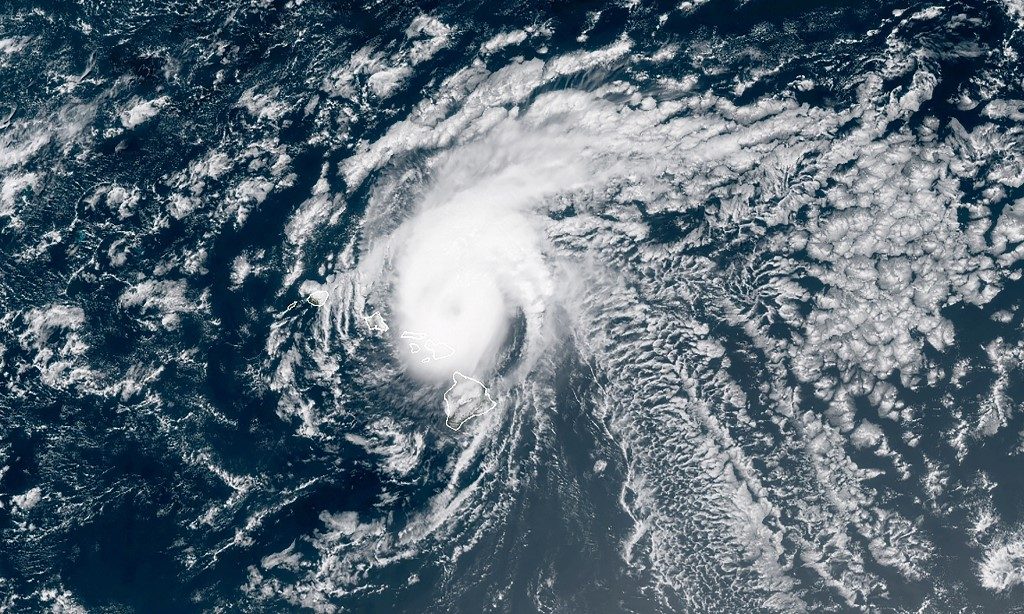SUMMARY
This is AI generated summarization, which may have errors. For context, always refer to the full article.

Hawaii hunkered down for Hurricane Douglas on Sunday, July 26, as the storm neared the Pacific archipelago, after the year’s first Atlantic hurricane lashed Texas.
The Category One hurricane was packing winds of up to 85 miles per hour (140 km/h) as it came close to the state’s most populous island, according to the National Hurricane Center.
It was around 60 miles (95 kilometers) north of capital Honolulu at 7:00 pm (0500 GMT Monday), the center said.
It is rare for severe storms to make landfall in Hawaii. Should Douglas do so, it will be only the third in modern history after Hurricane Dot in 1959 and Hurricane Iniki in 1992.
Maui county lifted its hurricane warning after skies began clearing over the island by mid-afternoon, and the island’s mayor Mike Victorino said there were no reports of serious damage.
But hurricane warnings were still in effect further west for Kauai county, as well as Oahu — the island home to Honolulu, a city of just under 350,000.
“Gradual weakening is forecast during the next 48 hours, but Douglas is expected to remain a hurricane as it moves through the islands,” the National Hurricane Center said earlier Sunday.
The NHC said the storm was expected to bring life-threatening and potentially destructive surf and rainfall of up to 15 inches on higher terrain.
Honolulu mayor Kirk Caldwell opened evacuation centers with space for 1,600 people — but warned they should be used as a “last option” and that those needing shelter would need to cover their faces and have their temperature taken local media reported.
“If you are sheltering away from home today, please remember that #COVID19 is not taking a break for the storm. Please continue to wear a mask and physically distance,” Caldwell tweeted Sunday evening.
Roads flooded in Texas
Late on Sunday, Hurricane Hanna was downgraded to a tropical depression after lashing Texas.
It was still packing winds of around 30 miles (45 kilometers) an hour as of 10:00 pm (0300 GMT Monday), after crossing from the Lone Star state into Mexico, the National Hurricane Center said, adding the storm should dissipate by Monday.
There were no immediate reports of casualties or widespread damage, and both Mexico and Texas had lifted all coastal storm warnings by afternoon.
Damage appeared limited in the immediate aftermath of Hanna’s Saturday arrival on Padre Island, a 110-mile-long barrier island off the Texas coast.
Images captured by CBS showed roads and a caravan park in the Texas coastal city of Corpus Christi strewn with debris and downed trees.
Some motorists even braved flooded roads, while one hardy storm-watcher was seen calmly taking pictures of the beach from a wind-swept promenade.
Local authorities were readying for the possibility of tornadoes into the evening in southern Texas, as the American Red Cross opened three shelters across the state in preparation.
Images shared by the National Weather Service office in Corpus Christi showed water lapping at the city’s bayfront Art Museum of South Texas. – Rappler.com
Add a comment
How does this make you feel?
There are no comments yet. Add your comment to start the conversation.